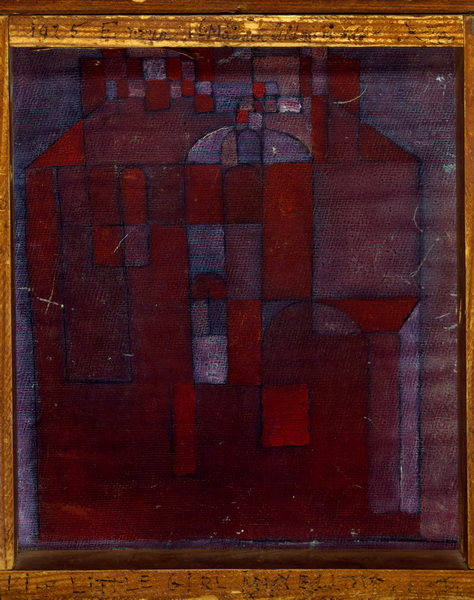
“Little Girl in Yellow” by Paul Klee
Artist Information: Paul Klee (1879-1940)
- Nationality: German (born in Switzerland)
- Style: Expressionism, Cubism, Surrealism, and Abstraction – Klee was a highly individualistic artist who defied easy categorization. He explored various styles throughout his career.
- Background: Klee taught at the Bauhaus school (a renowned German art and design school) from 1921 to 1931. This significantly influenced his artistic development and his theories on color and form.
- Unique Qualities: Klee’s work is characterized by its poetic, dreamlike quality, vibrant colors, and a sense of playful experimentation. He often incorporated symbols, letters, and numbers into his compositions. He had a profound understanding of color theory and explored various techniques like layering paint, using textures, and creating intricate compositions.
- Legacy: Klee is considered one of the most important artists of the 20th century, influencing generations with his innovative approach to art.
About “Little Girl in Yellow“:
- Date: The exact date of creation for “Little Girl in Yellow” might require further research in specific Klee catalogs or archives. However, based on its style, it likely dates to the 1920s or early 1930s, coinciding with his Bauhaus period or shortly after.
- Medium: Likely watercolor or gouache on paper, given the soft, luminous quality and the paper support.
- Style and Composition:
- Geometric Abstraction: The work demonstrates Klee’s signature geometric abstraction. The composition is built from overlapping rectangles and squares, creating a grid-like structure. This reflects the influence of Cubism but with a more playful and less rigid approach.
- Color Palette: The use of color is central. The warm yellows and oranges dominate, creating a sense of vibrancy. The contrasting cool blues and purples in the underlying layers add depth and complexity. Klee masterfully layers colors, allowing underlying hues to peek through and create a luminous effect.
- Symbolism: The small, circular shapes at the top might represent a simplified head or hair, hinting at the “little girl” subject. However, Klee often left his imagery open to interpretation, inviting viewers to bring their own associations.
- Texture: A close look at the artwork might reveal subtle textures created by layering paint or through the paper itself. This adds another visual dimension to the piece.
- Interpretation:
- The title “Little Girl in Yellow” suggests a portrait, but the representation is highly abstract. Klee focuses on capturing the essence of a child-like spirit through color and form rather than a realistic depiction.
- The geometric structure could symbolize the underlying order and structure Klee perceived in the world, while the vibrant colors express a sense of joy and vitality.
- The overlapping rectangles and squares create a sense of depth and movement, suggesting the multifaceted nature of reality and perception.
Background Information:
- Context: This work likely emerged during Klee’s Bauhaus period, where he explored the fundamental elements of art – line, color, and form – and their interrelationships. His teachings and theories at the Bauhaus significantly influenced his artistic output during this time.
- Themes: Klee often explored themes of nature, music, and the cosmos in his work. While not directly evident in “Little Girl in Yellow,” these broader interests might have subtly informed his approach to composition and color.
To gain even more in-depth information, I recommend:
- Researching Klee’s Bauhaus period: Understanding his artistic philosophy and teaching during this time will shed light on his stylistic choices.
- Consulting the Paul Klee Foundation in Bern, Switzerland: They are the primary resource for Klee scholarship and might have specific information on this artwork.
- Looking for scholarly articles and books on Klee: Numerous publications delve into his life, work, and artistic theories.
In conclusion, “Little Girl in Yellow” is a charming example of Paul Klee’s unique artistic vision. It showcases his mastery of color, his playful approach to abstraction, and his ability to evoke a sense of wonder and mystery through simple geometric forms.
